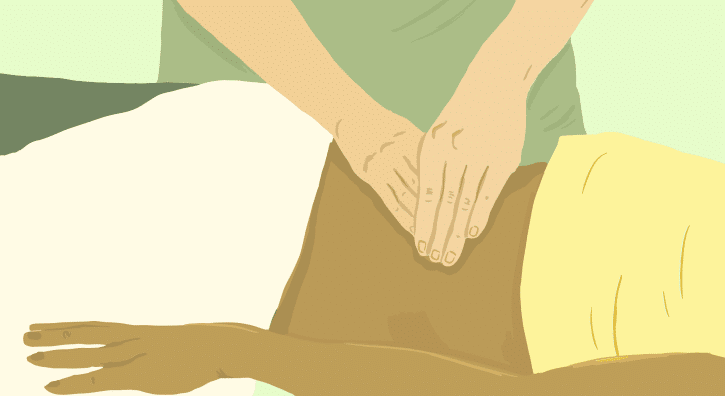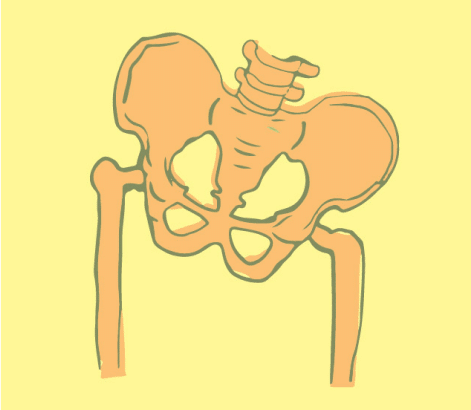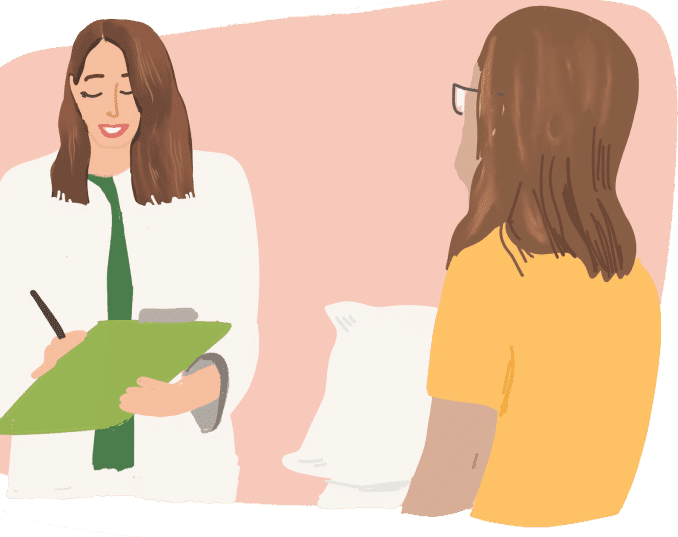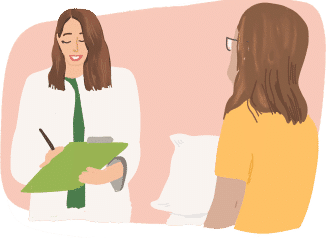

Sexual dysfunction is a broad term covering issues like reduced libido, performance anxiety, delayed or absent orgasms, and discomfort during sex. While many associate these problems with psychological or hormonal causes, one of the most overlooked contributors is pelvic floor muscle dysfunction. These muscles are crucial for sexual health—supporting erections in men and contributing to the pleasurable contractions of orgasm in all individuals. When the pelvic floor muscles are too tight, too weak, or out of sync, they can diminish pleasure and even create pain during sexual activity. This often has a ripple effect on confidence, mood, and relationships. Fortunately, pelvic floor physical and occupational therapy is a specialized, evidence-based treatment designed to correct these muscle imbalances and support a return to comfortable, enjoyable intimacy.
The Facts
- Pain during sexual activity affects around one-third of women before menopause, making it a common issue that often goes unspoken.
- Erectile dysfunction impacts a significant number of men under 40, with prevalence rates ranging from 15% to as high as 72% in various studies.
- As men age into their 40s through 70s, roughly 52% report experiencing erection-related difficulties on a mild to moderate scale.
- Post-prostatectomy sexual side effects are common, with as many as four out of five men experiencing erectile impairment.
- A staggering 60% of women transitioning through menopause don’t feel comfortable discussing sexual discomfort, often due to stigma or fear of being dismissed.
- Hormonal contraceptives and some prescription acne medications are known to trigger vulvar irritation and reduced lubrication, which can interfere with pleasurable sex.
- As many as 65% of women continue to experience painful intercourse up to a year and a half after delivering a baby.
Sexual dysfunction is a broad term covering issues like reduced libido, performance anxiety, delayed or absent orgasms, and discomfort during sex. While many associate these problems with psychological or hormonal causes, one of the most overlooked contributors is pelvic floor muscle dysfunction. These muscles are crucial for sexual health—supporting erections in men and contributing to the pleasurable contractions of orgasm in all individuals. When the pelvic floor muscles are too tight, too weak, or out of sync, they can diminish pleasure and even create pain during sexual activity. This often has a ripple effect on confidence, mood, and relationships. Fortunately, pelvic floor physical and occupational therapy is a specialized, evidence-based treatment designed to correct these muscle imbalances and support a return to comfortable, enjoyable intimacy.
The Facts
- Pain during sexual activity affects around one-third of women before menopause, making it a common issue that often goes unspoken.
- Erectile dysfunction impacts a significant number of men under 40, with prevalence rates ranging from 15% to as high as 72% in various studies.
- As men age into their 40s through 70s, roughly 52% report experiencing erection-related difficulties on a mild to moderate scale.
- Post-prostatectomy sexual side effects are common, with as many as four out of five men experiencing erectile impairment.
- A staggering 60% of women transitioning through menopause don’t feel comfortable discussing sexual discomfort, often due to stigma or fear of being dismissed.
- Hormonal contraceptives and some prescription acne medications are known to trigger vulvar irritation and reduced lubrication, which can interfere with pleasurable sex.
- As many as 65% of women continue to experience painful intercourse up to a year and a half after delivering a baby.
Symptoms
*Sexual Dysfunction in people with a penis
- Difficulty achieving or maintaining an erection, reduced rigidity, or early climax are hallmark signs of erectile dysfunction.
- A drop in ejaculatory pressure—or a total lack of it—is sometimes reported alongside other sexual performance concerns.
- Climacturia, or the involuntary release of urine during orgasm, is another indication that something may be off.
- Ejaculatory pain can affect different regions, including the penile shaft, tip, testicles, or the perineum.
- Visible changes to the color of the skin in the penis, scrotum, or perineal zone may be an additional clue that something needs medical attention.
Postpartum Sexual Dysfunction
- Vaginal dryness stemming from breastfeeding-related hormone fluctuations
- Discomfort or tenderness in the perineal area, often related to stitches or healing wounds
- Lower intensity of orgasm or total lack of climax following childbirth
- Urinary leakage that may accompany physical intimacy or orgasms
- Pain that makes sexual activity physically and emotionally difficult during the postpartum stage
*Sexual Dysfunction in people with vulvas/vaginas
- Insufficient vaginal lubrication, even when sexually stimulated, resulting in persistent dryness
- Discomfort or pain felt during the beginning of penetration, with deep thrusts, or throughout intercourse
- Excessive sensitivity of the clitoris that causes pain rather than pleasure during intimate touch
- Burning sensations that develop following sexual activity and can last for hours or longer
- Trouble reaching orgasm or a decrease in the intensity of climax
- Urinary incontinence during sex, leading to unexpected leakage episodes
- A sudden release of urine during orgasm, a condition identified in medical settings as climacturia
Menopausal Sexual Dysfunction and Post-gynecologic cancer treatment
- Estrogen loss leading to decreased lubrication and increased friction during sex
- Physical inability or fear of engaging in penetrative sex due to discomfort
- Intercourse-related pain that may start during sex or follow afterward
- Loss of orgasmic capacity, either through reduced sensitivity or complete absence
Symptoms
*Sexual Dysfunction in people with a penis
- Difficulty achieving or maintaining an erection, reduced rigidity, or early climax are hallmark signs of erectile dysfunction.
- A drop in ejaculatory pressure—or a total lack of it—is sometimes reported alongside other sexual performance concerns.
- Climacturia, or the involuntary release of urine during orgasm, is another indication that something may be off.
- Ejaculatory pain can affect different regions, including the penile shaft, tip, testicles, or the perineum.
- Visible changes to the color of the skin in the penis, scrotum, or perineal zone may be an additional clue that something needs medical attention.
*Sexual Dysfunction in people with vulvas/vaginas
- Insufficient vaginal lubrication, even when sexually stimulated, resulting in persistent dryness
- Discomfort or pain felt during the beginning of penetration, with deep thrusts, or throughout intercourse
- Excessive sensitivity of the clitoris that causes pain rather than pleasure during intimate touch
- Burning sensations that develop following sexual activity and can last for hours or longer
- Trouble reaching orgasm or a decrease in the intensity of climax
- Urinary incontinence during sex, leading to unexpected leakage episodes
- A sudden release of urine during orgasm, a condition identified in medical settings as climacturia
Postpartum Sexual Dysfunction
- Vaginal dryness stemming from breastfeeding-related hormone fluctuations
- Discomfort or tenderness in the perineal area, often related to stitches or healing wounds
- Lower intensity of orgasm or total lack of climax following childbirth
- Urinary leakage that may accompany physical intimacy or orgasms
- Pain that makes sexual activity physically and emotionally difficult during the postpartum stage
Menopausal Sexual Dysfunction and Post-gynecologic cancer treatment
- Estrogen loss leading to decreased lubrication and increased friction during sex
- Physical inability or fear of engaging in penetrative sex due to discomfort
- Intercourse-related pain that may start during sex or follow afterward
- Loss of orgasmic capacity, either through reduced sensitivity or complete absence
Associated Diagnoses
Diagnoses such as Endometriosis, Vulvodynia, Interstitial Cystitis/Painful Bladder Syndrome, Pudendal Neuralgia, Chronic Pelvic Pain Syndrome/Male Pelvic Pain, Lichen Sclerosus, Lichen Planus, Pelvic Floor Dysfunction, post-prostatectomy complications, and Genitourinary Syndrome of Menopause are all associated with sexual dysfunction and pelvic pain.

Associated Diagnoses
Diagnoses such as Endometriosis, Vulvodynia, Interstitial Cystitis/Painful Bladder Syndrome, Pudendal Neuralgia, Chronic Pelvic Pain Syndrome/Male Pelvic Pain, Lichen Sclerosus, Lichen Planus, Pelvic Floor Dysfunction, post-prostatectomy complications, and Genitourinary Syndrome of Menopause are all associated with sexual dysfunction and pelvic pain.


Causes of Sexual Dysfunction
- Pelvic pain syndromes associated with pelvic floor dysfunction (above)
- Childbirth
- Medications
- Obesity
- Cardiovascular disease
- Menopause
- Jelqing
- Genital mutilation, genital cutting
- Surgically-induced
- Pelvic Floor Reconstruction
- Prostatectomy
- Gender affirming surgery
- Episiotomy
- Vestibulectomy
- Pudendal Nerve Decompression
- Mesh excision
Causes of Sexual Dysfunction
- Pelvic pain syndromes associated with pelvic floor dysfunction (above)
- Childbirth
- Medications
- Obesity
- Cardiovascular disease
- Menopause
- Jelqing
- Genital mutilation, genital cutting
- Surgically-induced
- Pelvic Floor Reconstruction
- Prostatectomy
- Gender affirming surgery
- Episiotomy
- Vestibulectomy
- Pudendal Nerve Decompression
- Mesh excision

Diagnostic Challenges
Discussing sexual health in medical appointments remains a significant hurdle for both healthcare providers and patients. Many clinicians report feeling unprepared to initiate such conversations, and patients—particularly those in the LGBTQ+ community—frequently hold back due to a fear of judgment or past experiences with bias. This mutual avoidance can leave important health concerns unaddressed, delaying diagnosis and support. At PHRC, we believe that everyone deserves compassionate, knowledgeable care—especially in areas as personal as sexual wellness. We’ve designed our clinic environment and care model to be inclusive, affirming, and evidence-based. It’s important to recognize that sexual health is not just about physical function; it’s closely linked to mental and emotional well-being. That’s why our approach combines skilled pelvic floor therapy with medical evaluation and psychological care, ensuring our patients receive comprehensive, empathetic treatment tailored to their needs.
Diagnostic Challenges
Discussing sexual health in medical appointments remains a significant hurdle for both healthcare providers and patients. Many clinicians report feeling unprepared to initiate such conversations, and patients—particularly those in the LGBTQ+ community—frequently hold back due to a fear of judgment or past experiences with bias. This mutual avoidance can leave important health concerns unaddressed, delaying diagnosis and support. At PHRC, we believe that everyone deserves compassionate, knowledgeable care—especially in areas as personal as sexual wellness. We’ve designed our clinic environment and care model to be inclusive, affirming, and evidence-based. It’s important to recognize that sexual health is not just about physical function; it’s closely linked to mental and emotional well-being. That’s why our approach combines skilled pelvic floor therapy with medical evaluation and psychological care, ensuring our patients receive comprehensive, empathetic treatment tailored to their needs.
Treatment:
How We Can Help You

If you’re based in Sherman Oaks and dealing with ongoing sexual health concerns, we strongly suggest considering a pelvic floor physical and occupational therapy evaluation. Often overlooked in traditional care, pelvic floor muscles play a significant role in sexual function—and dysfunction here can cause or worsen symptoms. At your first appointment, we’ll conduct a complete review of your medical story: the treatments you’ve tried, what’s helped, what hasn’t, and what you’ve been told in the past. Many patients from Sherman Oaks come to us discouraged by a lack of clear answers, and we’re here to change that by offering a more thoughtful, comprehensive approach. Your physical and occupational therapist will assess your pelvic floor’s performance, your soft tissue, your joint mobility, and your nerve function, all while analyzing overall movement patterns. These results form the basis of your individualized treatment plan, which typically involves 1–2 sessions per week over about 12 weeks. You’ll also get specific home exercises to support your progress and we’re happy to coordinate with your other providers to align your care. Our goal is to guide you through every step of recovery so that you can live with greater freedom and ease, right here in Sherman Oaks.

Treatment:
How We Can Help You
If you’re based in Sherman Oaks and dealing with ongoing sexual health concerns, we strongly suggest considering a pelvic floor physical and occupational therapy evaluation. Often overlooked in traditional care, pelvic floor muscles play a significant role in sexual function—and dysfunction here can cause or worsen symptoms. At your first appointment, we’ll conduct a complete review of your medical story: the treatments you’ve tried, what’s helped, what hasn’t, and what you’ve been told in the past. Many patients from Sherman Oaks come to us discouraged by a lack of clear answers, and we’re here to change that by offering a more thoughtful, comprehensive approach. Your physical and occupational therapist will assess your pelvic floor’s performance, your soft tissue, your joint mobility, and your nerve function, all while analyzing overall movement patterns. These results form the basis of your individualized treatment plan, which typically involves 1–2 sessions per week over about 12 weeks. You’ll also get specific home exercises to support your progress and we’re happy to coordinate with your other providers to align your care. Our goal is to guide you through every step of recovery so that you can live with greater freedom and ease, right here in Sherman Oaks.
How Can We Help You?
Please use the form below to send us any questions or comments. You must include your e-mail address in order for us to send a response. Please be assured that all of your information will be kept confidential.

Join The Newsletter. Win a copy of our book, “Pelvic Pain Explained!”
We love getting to know our website visitors. Please tell us a little bit about yourself and get the latest info via PHRC e-newsletter!
*Subscribers automatically eligible to win our book, “Pelvic Pain Explained.”
In Pelvic Pain Explained, readers are invited into a compelling exploration of a condition that often remains misunderstood and minimized. This work unravels the deeply personal and systemic challenges involved in living with pelvic pain. It sheds light on the difficult, sometimes years-long process of reaching an accurate diagnosis, along with the clinical uncertainty that providers themselves often face. With sensitivity and insight, it looks at the frustration that arises from trying various treatments and coping with inconsistent results. The book also places special emphasis on the emotional and social impact—how pelvic pain can isolate sufferers and silently strain their relationships and mental health. It’s a story about more than just symptoms; it’s about resilience, hope, and the need for compassionate care.


